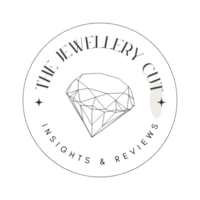Chase a rainbow all the way to its end and you’re guaranteed a pot of gold, they say, but it would seem that this season the gold and the rainbow are closer than ever as designers use an increasingly innovative arsenal of techniques to bring a blast of colour to precious jewellery.
Rainbow colour mixes dominated the Aw18 runways; most notably at Burberry where exiting chief creative officer Christopher Bailey’s parting gift to the LGBTQ+ community included a rainbow Burberry check as well as rainbow furry capes, flowing skirts and knitwear. The quickest route to such flamboyant flashes of colour in jewellery, which has also been gripped with rainbow fever, is a well chosen swirl of rainbow-hued sapphires.
Another authority of this style is Noor Fares, whose latest collection is called, simply, Rainbow. As well as cocktail rings with swirling vortexes of colourful sapphires driving the eye into otherworldy white opals, Fares takes colour experimentation further with a selection of gold earrings that look anything but. The yellow gold spiral hoops from the new collection have been covered in a special coating that smothers them with shades of bright orange, fuschia, and electric blues and greens.
Colourful ceramic
Applying bright coatings to gold is an increasingly popular method of creating colourful jewels without losing the precious element that makes them luxurious. Susi Smither of award-winning fine jewellery brand The Rock Hound has been using nano-ceramic plating to create her bold jewels – the same type of ceramic your Chanel J12 watch is made from but applied in infinitesimal layers. In her Shoreditch studio, Smither clashes colours to create the pop art-esque designs of her Chromanteq line that couples hot pink ceramic and lilac Myanmar spinels, purple or electric blue ceramic with golden Brazilian heliodors (all her gems are sourced to strict ethical standards).
This high-tech application of colour is a recent addition to jewellers’ tool boxes, but a traditional method of brightening jewels currently winning new fans is enamel. If enamel makes you think of grandmothers, twee arts and crafts jewellery and dusty regional gift shops, you’re not wrong. However, jewellers such as Alice Cicolini, Solange Azagury Partridge, Hoonik Chang for Aisha Baker, and Ejing Zhang (who is also instigating a resin revival) are giving it a new lease of life. Rather than trying to replicate grimy stained-glass windows, these enamel jewels are painterly in their execution with bold slicks of opaque colour. Enamel can also be used as a coating over metal, as young Italian jeweller Bea Bongascia’s new collection You’re So Vine! demonstrates brilliantly with twisting red, orange and blue enamel vines wrapping round gold and diamond designs like climbers in the garden.
Titanium, not gold
While all these methods of colour injection have centred on livening up precious metals, there is one mode that aims to replace them. The past few seasons in high jewellery have seen the arrival of a new metal, titanium, and everyone from Chinese art-jeweller Wallace Chan to Bond Street stalwart Chopard is using it.
Though devoid of any hallmark that would guarantee its status as precious – and indeed it is not a precious metal but an industrial one – it has slowly been accepted into the upper echelons of jewellery design. Titanium brings with it some major benefits: it is ultra light and so allows jewellers to create large designs – such as Anna Hu’s enormous titanium and diamond Myth of the Orchid earrings – that won’t wear the wearer down; it is much stronger than gold, making it perfect for gemstone setting; and, most excitingly, it is a colour chameleon. The metal, which is naturally a grey metallic shade, can be heat treated to achieve a variety of hues such as blue, purple, green, pink, or an artful blend of them all.
3D-printed nylon
For a more affordable way to introduce colour – and tech – to your jewellery box, why not turn to one of the handful of jewellers working with 3D printed nylon jewellery? Designers such as Evgeniia Balashova, one of the biggest hits at last year’s edition of London’s jewellery shopping haven The Goldsmiths Fair, are working with this new technology to create playful statement jewels that are light and can be transformed into any shade. Just as Balashova’s jewels have precious elements, Oddical, which has already racked up a shelf full of awards, plates its nylon jewels with 22ct gold before adding flashes of hand-painted colour.
As the nights draw in and winter takes hold, the appeal of these colourful jewels – be they made with titanium, enamel, sapphires or nylon – will only increase as we look for ways to brighten our days. During a long wet winter, we all deserve a rainbow. Particularly one that is already glittering with treasures.
Dive into detailed stories and expert advice on the jewellery industry by heading to Jewellerycut.com.
